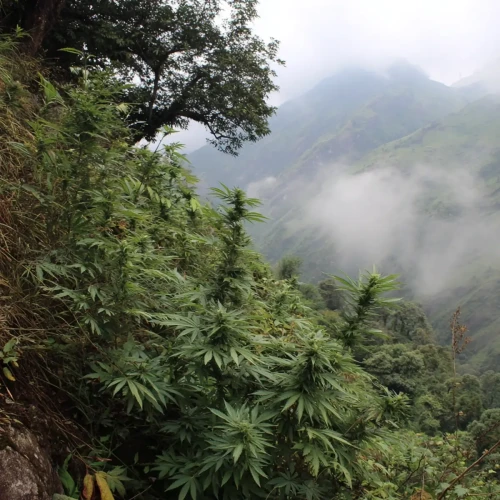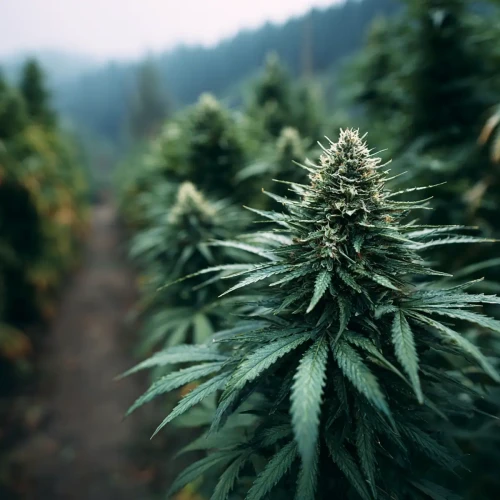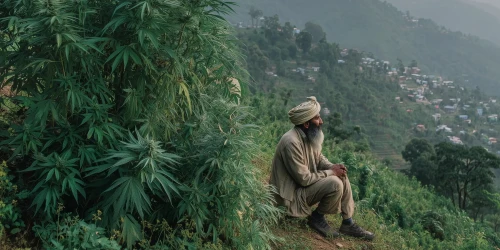A lot of people talk about "indica" and "sativa" when they talk about cannabis these days, but many new and even experienced growers don't know what makes pure indica strains different. Let's clear up the mystery about these classic cannabis strains by looking at what makes pure indica strains different, how they can help with health problems, important growing tips, and their historical background.
The History of Pure Indica Cannabis
The mountains of Afghanistan, Pakistan, Northern India, and nearby areas are where pure indica cannabis strains come from. Over time, these plants adapted to live in harsh, mountainous areas. They grew into tough, strong types that could handle colder weather, shorter summers, and higher altitudes. For hundreds of years, people in these areas have used indica cannabis for both medical and recreational purposes. People know it helps them relax and sleep.
How to Spot Pure Indica Traits
Pure indica cannabis strains have special traits because of where they grow and how they evolved:
- Indica plants are short, bushy, and thick. Most of the time, they don't get taller than 35 inch to 47 inch. They are great for growing indoors or secretly outside, especially in places where there isn't much vertical space, because they are shorter.
- Leaf Structure: Indica strains have thick, strong branches and broad, dark green leaves that can hold up heavy, dense buds. These wide leaves get a lot of sun, which speeds up photosynthesis when the days are shorter.
- Cycle of Bloom: Pure indicas bloom for a short time, usually between 7 and 9 weeks. People who grow crops for a living and want to sell them quickly will love how quickly they bloom. Home growers who want to pick their crops sooner will also love this.
- Structure of the Bud: Indica buds are heavy, dense, and resinous. They often have dark purples and blues, especially when the temperature drops near the end of the flowering cycle. They are also great for making concentrates and extracts because they make a lot of resin.
Investigating the healing effects
People know that pure indica cannabis makes them feel calm and relaxed. Indica strains don't make you feel good or give you energy like sativa strains do. Instead, they mostly affect the body:
- Indica strains are great for stress relief and relaxation. They help people relax and find peace after a long day.
- Pain Management: Pure indica strains like Afghan Kush and Granddaddy Purple are often used to treat muscle spasms, arthritis, and chronic pain because they are sedative and anti-inflammatory.
- Indica strains like Northern Lights and Hindu Kush are a natural way for people who have trouble sleeping to get a good night's sleep without the grogginess that comes with taking sleeping pills.
- Indica strains are known to make people hungry, which is good for people who have lost their appetite because of chemotherapy, eating disorders, or other medical problems. This gives them the food they need.
- Indicas are good at lowering anxiety and stress levels. They calm the mind and ease mental tension. Indica strains are often used to help with anxiety disorders, panic attacks, and stress in general.
Growing Pure Indica Weed
If you use the right methods and conditions, growing indica strains can be both rewarding and not too hard:
Optimal Environment:
- Temperature: Pure indica strains do best in places where the temperature is between 64.4 °F and 80.6 °F. The plant makes more resin when the temperature drops a little at night. This makes it stronger.
- Humidity: During the vegetative stages, keep the relative humidity (RH) between 40 and 50%. Then, during the flowering stages, slowly lower it to 30 to 40% to lower the risk of mold and mildew.
Soil and Nutrients:
- Add organic matter to soil that has a lot of nutrients, drains well, and is rich in nutrients. Indicas eat a lot, especially when they are in bloom. They need more potassium and phosphorus to help their buds get stronger.
- Give them organic teas and nutrient solutions on a regular basis to help them grow, stay healthy, and make more resin.
Lights:
- Indicas grow best when they get a steady amount of moderate light. Indoor growers often use high-intensity discharge (HID) lights or efficient LED systems with an 18/6-hour light schedule during vegetative growth. They switch to a 12/12-hour cycle when the plants start to bloom.
How to Train:
- Low-Stress Training (LST) and Sea of Green (SOG) are two very useful methods that help light get through, air flow, and yield.
- Indica has thick leaves, so it's very important to prune and remove leaves regularly to keep plants healthy and encourage bud growth.


Common Problems and Their Solutions
Because Indica grows so densely, it can be hard for growers to do some things:
- Mold and mildew: Plants are more likely to get fungal diseases if their leaves are thick and their buds are tightly packed. Regular checks, good air flow, and lower humidity levels during flowering make these risks much less likely.
- Nutrient Management: Indicas can get burned quickly if they get too many nutrients. To avoid overfeeding, start with moderate nutrient solutions and slowly raise the amount while watching how the plants react.
How to Pick the Best Indica Strain
When picking the right indica strain, it depends on what you need and what effects you want:
- If you want to ease your pain, go with Afghani feminized or Northern Lights fem seeds.
- Hindu Kush seeds and GDP feminized seeds are two great strains that can help you sleep.
- Try strains like Bubba Kush feminized or Blueberry Auto strain if you want to feel less stressed.
To sum up
Pure indica cannabis strains are still great for both medical and recreational users, and they are still very popular with growers who want plants that are easy to care for and make a lot of buds. By learning about the history, unique traits, medical uses, and specific growing needs of these classic strains, growers and users can fully appreciate and use their full potential. Pure indica cannabis is still an important part of growing cannabis because it promises good harvests, relaxation, and relief.










